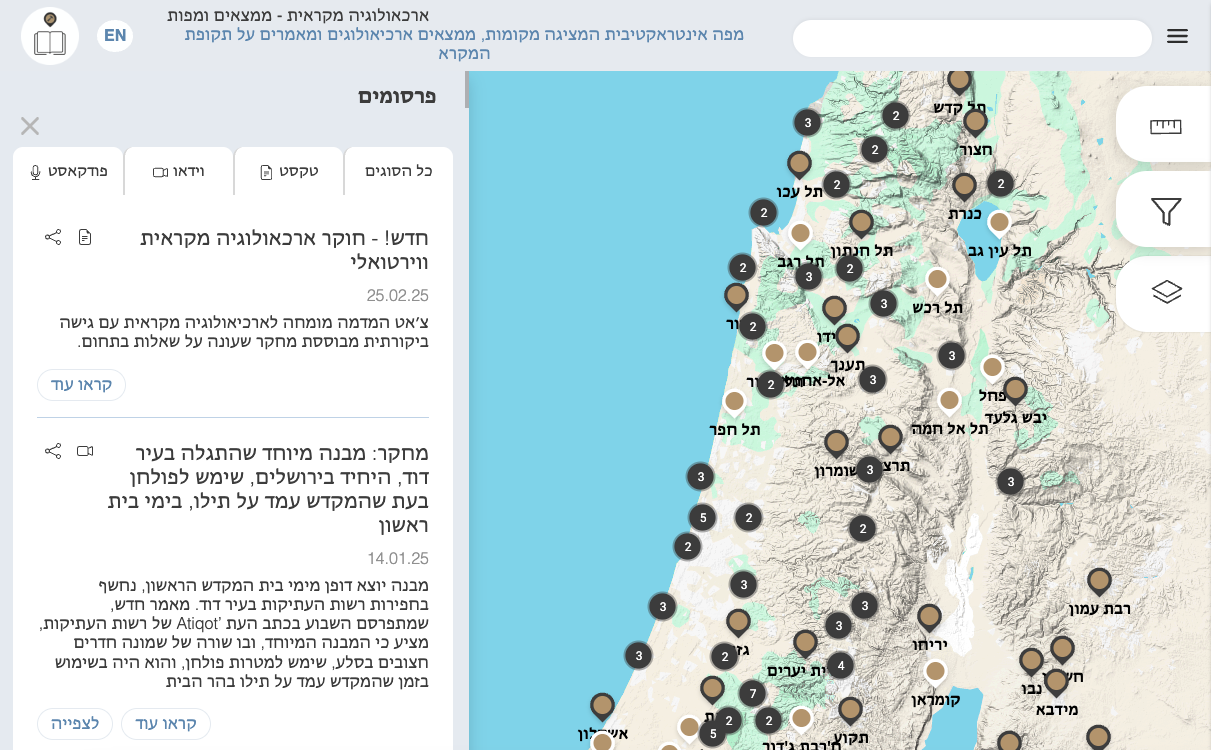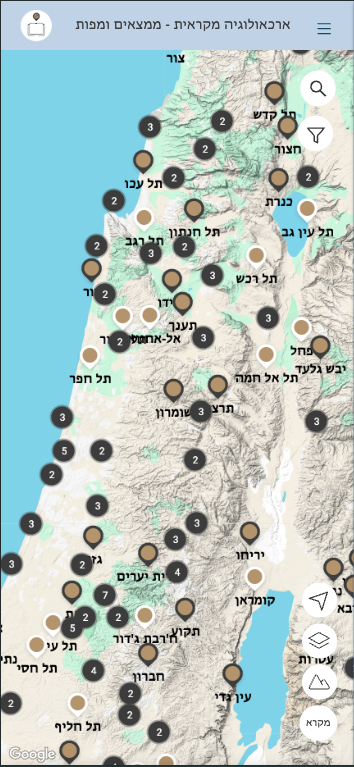Biblical Map
Mobile Web AppBiblical Map is a non-profit initiative that makes updated, scientifically grounded content accessible to the public, connecting the Bible, archaeology, and the historical geography of Israel. Designed for anyone seeking to explore biblical history from a scientific perspective, the platform presents theories and research from leading academic streams without bias.
Written by archaeology students from Israel’s top universities, the site offers in-depth insights into disputed topics and the latest developments in biblical archaeology, inviting users to learn, share, and contribute valuable content.
Codama’s Solution
Web App Design & Development
Developing the Biblical Map web application required a robust and dynamic technological foundation to handle the vast amount of interconnected data while ensuring fast, seamless user experiences. Here’s what makes this project stand out:
- Efficient Data Management Across Complex Collections: With thousands of archaeological locations and interconnected tables—such as biblical eras, milestones, researchers, and publications—the challenge was to design a relational database (MySQL) that enables efficient queries and cross-referencing without sacrificing performance. This ensures users can filter and retrieve data with precision, even when dealing with large datasets.
- Dynamic Map Integration: Utilizing the Google Maps API, the platform offers a highly interactive map experience. Users can visually explore biblical archaeological sites, overlay filters from multiple collections, and instantly see results. The seamless integration of the map with the database required advanced JavaScript and API optimization techniques.
- Cross-Collection Interconnectivity: To provide a holistic experience, every table communicates effectively. For instance, selecting a biblical location automatically displays related milestones, archaeological layers, biblical quotes, and dictionary terms. This tight integration delivers a meaningful narrative, making it easier for users to explore complex historical data.
- Custom Filtering and Search Functionality: The platform allows users to apply layered filters to zero in on specific data points—whether it’s a biblical quote tied to an archaeological era or locations connected to a specific researcher. These advanced filtering capabilities required careful backend design and JavaScript-powered frontend logic.
- User-Centric Interface: A clean and intuitive UI ensures that users, ranging from students to researchers, can navigate the site effortlessly. Balancing the display of detailed information without overwhelming the user was a key design priority.
- Scalable and Future-Ready Architecture: Built with PHP for backend processing and JavaScript for frontend interactivity, the platform is designed to scale as new locations, discoveries, and research are added. The underlying architecture ensures that expanding the database or integrating additional features can be done with minimal disruption.

